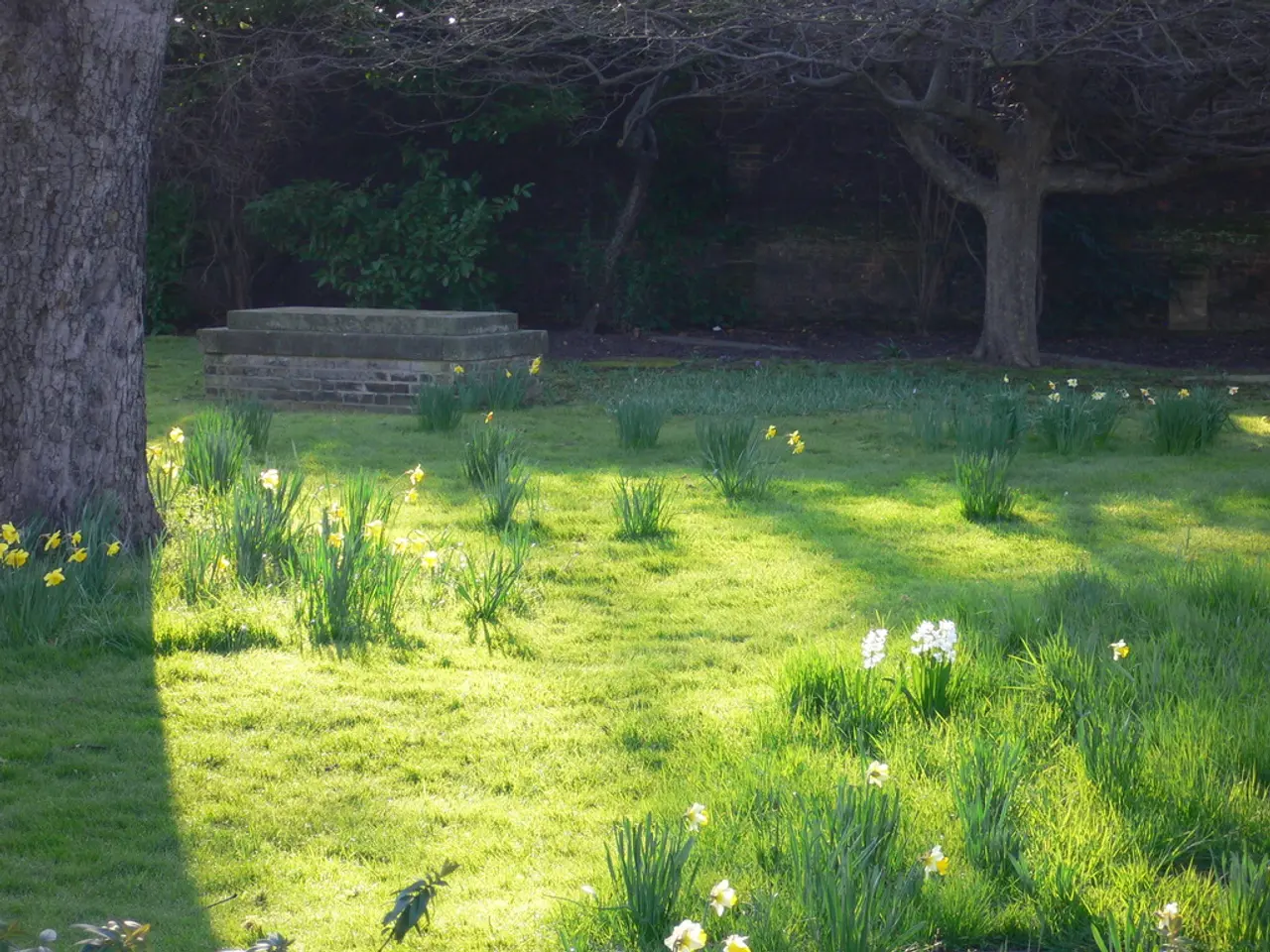Celebrating Midsummer's Magical Garden Transitions
Celebrate St. John's Day on June 24th: Garden Activity Ideas
June 19, 2025, 12:19 PM
Embrace the enchanting midsummer season! As we reach the midpoint of the year, it's time to bid farewell to certain crops and welcome new ones while engaging in age-old rituals that honor the healing powers of nature. Here's a sneak peek into the transformative practices and ceremonies that blend science and folklore, making Midsummer's Day a unique experience in the gardening world.
What's Happening in the Garden
The heat of the summer sun encourages growth and activity in the garden. As a result, plants are at their most productive, making this the perfect time for active gardening:
- Deadhead spent spring blooms - this will conserve energy for future seasons
- Monitor and address pests and diseases like Japanese beetles, aphids, snails, slugs, and mildew
- Keep plants well-watered and consider adding mulch
- Stake or cage tomato plants and add trellises for climbing vines
- Harvest strawberries and protect fruits from birds using netting
- Continue to harvest herbs like chamomile, lavender, and St. John's Wort, which have peak essential oil content at this time
The Allure of Midsummer Herbs
Midsummer is a legendary period for herb gathering, as many cultures believe that plants contain the most powerful healing properties during this time. Here's a glimpse into traditional herb-focused practices that celebrate the magical and medicinal role of plants:
- Historically, this is the ideal moment to harvest herbs for teas, tinctures, and charms as many reach their peak essential oil content during the summer months.
- Gathering herbs at dawn was thought to double their potency, and in Germany, St. John's Wort was traditionally hung in doorways to ward off evil spirits.
- In Ukraine, collecting an odd number of different herbs on Midsummer Eve was a practice linked to luck, love, and health.
Witnessing the Majesty of Wildflowers
In Scandinavian and northern European cultures, it's customary to gather wildflowers from hedgerows and meadows to decorate Midsummer poles, dress tables, and weave into flower crowns. This ancient tradition highlights the respect for plants and their seasonal cycles while celebrating the beauty and fertility of nature during the height of summer.
The Symphony of Transition
Midsummer's Day provides a unique opportunity to bid farewell to asparagus and rhubarb as their growing season comes to a close while embracing the planting of summer crops like beans, squash, melons, gourds, and cucumbers. This period also marks the ideal time to prune trees and hedges, shaping plants for optimal growth while allowing for proper photosynthesis to deliver beautiful and bountiful yields.
So, as fireflies enchant our nights, let's honor the turning point that Midsummer's Day represents in our gardens, cultivating magic and Science in harmony as we pass through the peak of the growing season together!
- In the garden, this midsummer period is the perfect time to harvest herbs like chamomile, lavender, and St. John's Wort, as they reach their peak essential oil content.
- As we move through Midsummer's Day, it's also the ideal moment to transition from crops like asparagus and rhubarb to summer ones such as beans, squash, melons, gourds, and cucumbers.








